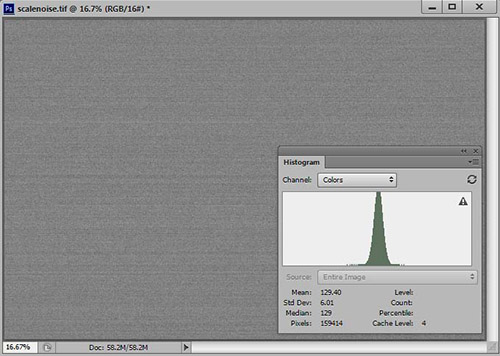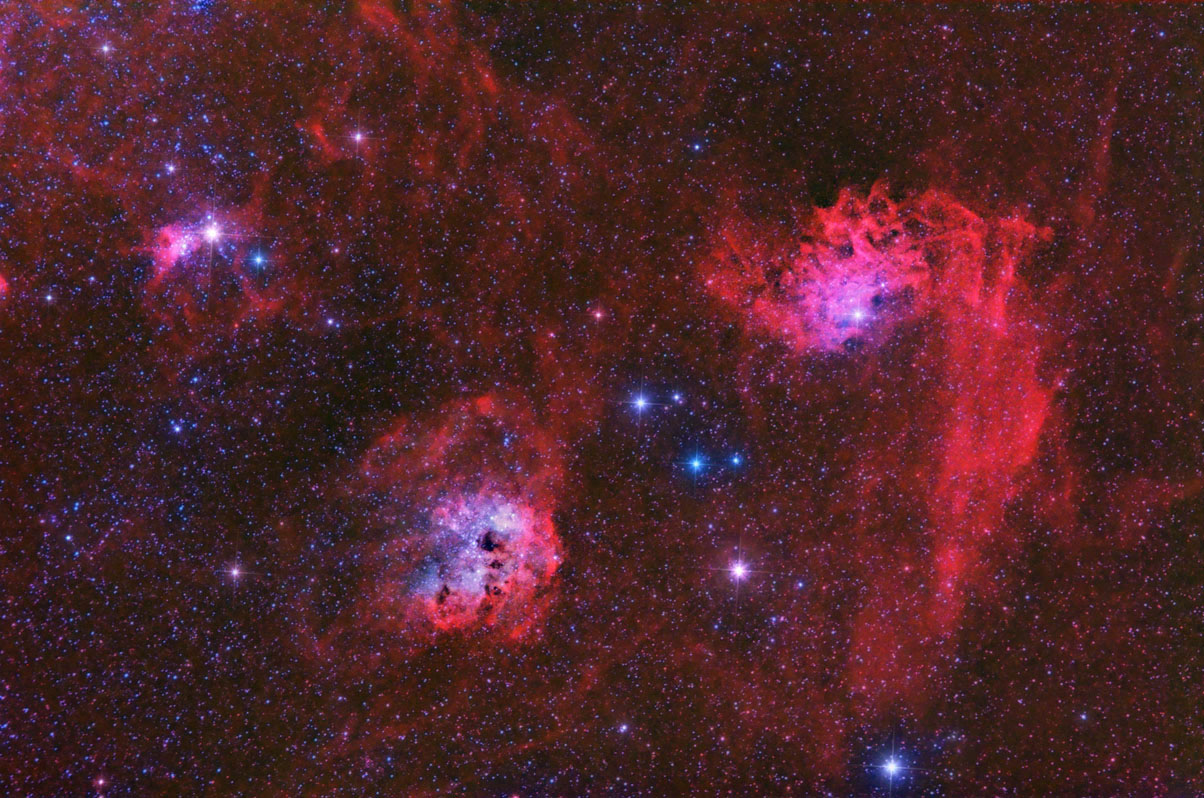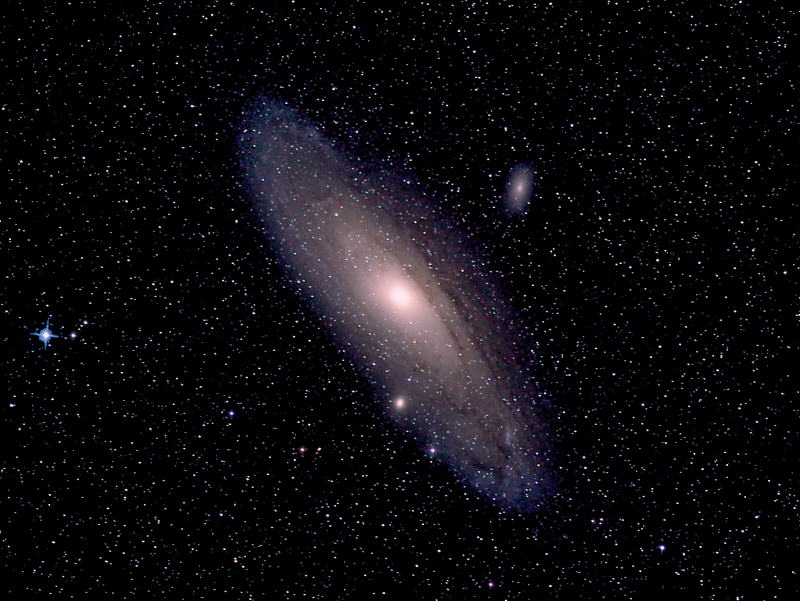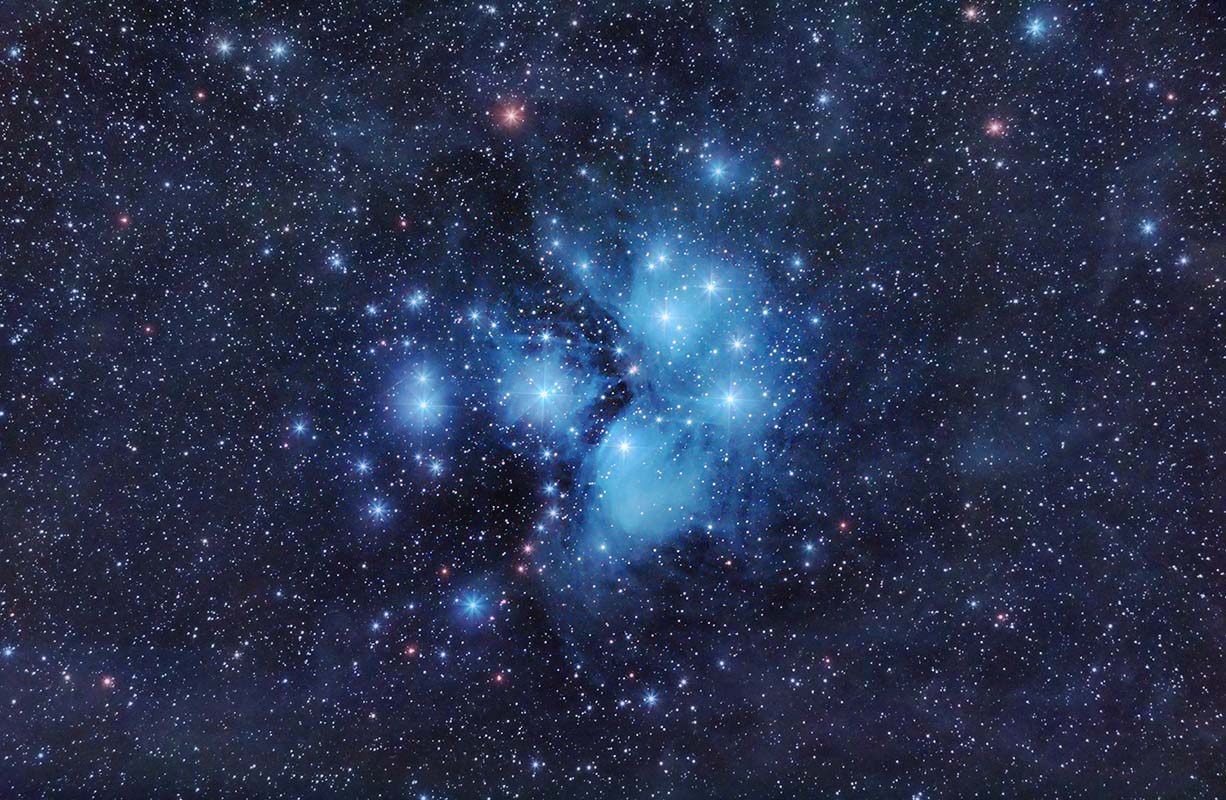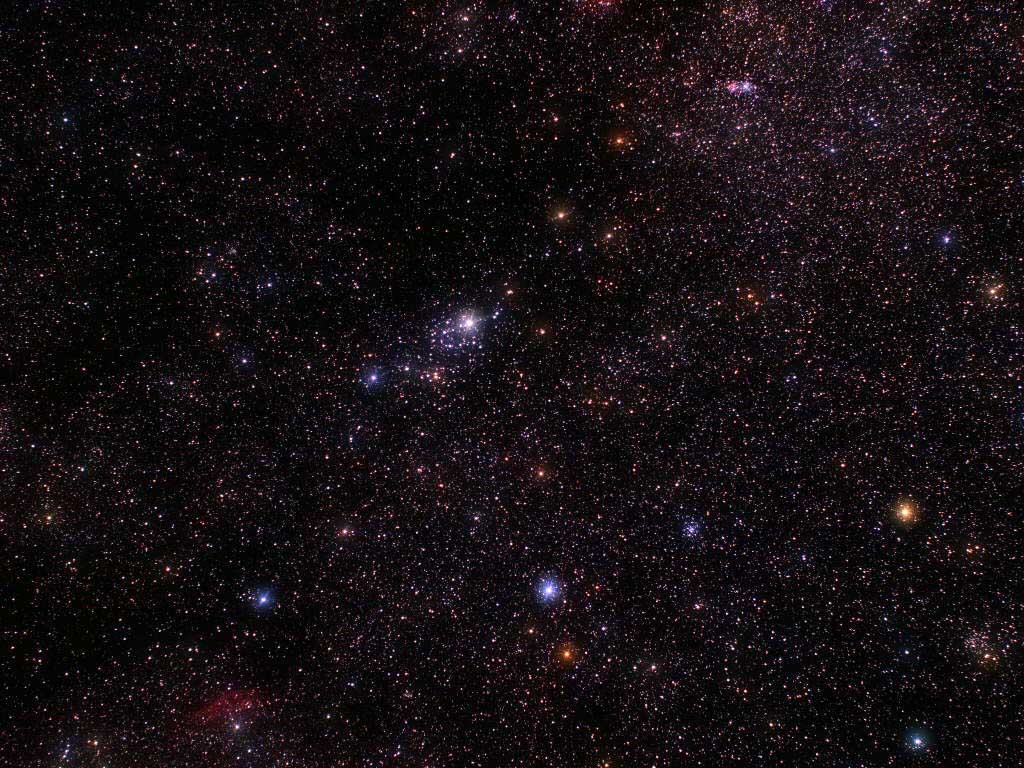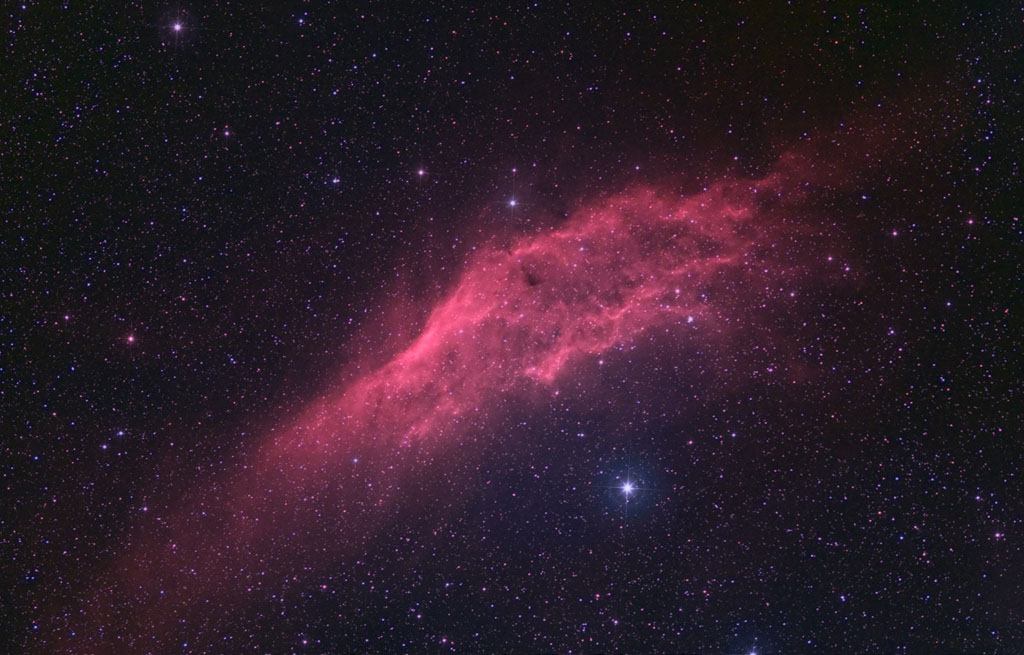Narrowband Imaging with DSLRs
Using narrowband filters with DSLRs is possible and can give good results. In the case of H-alpha, as only I in 4 pixels sees red, they are somewhat inefficient but good results are possible. Note: Flat fields can be a problem with H-alpha and DSLRs - certainly with IRIS you need to make the master flat manually.
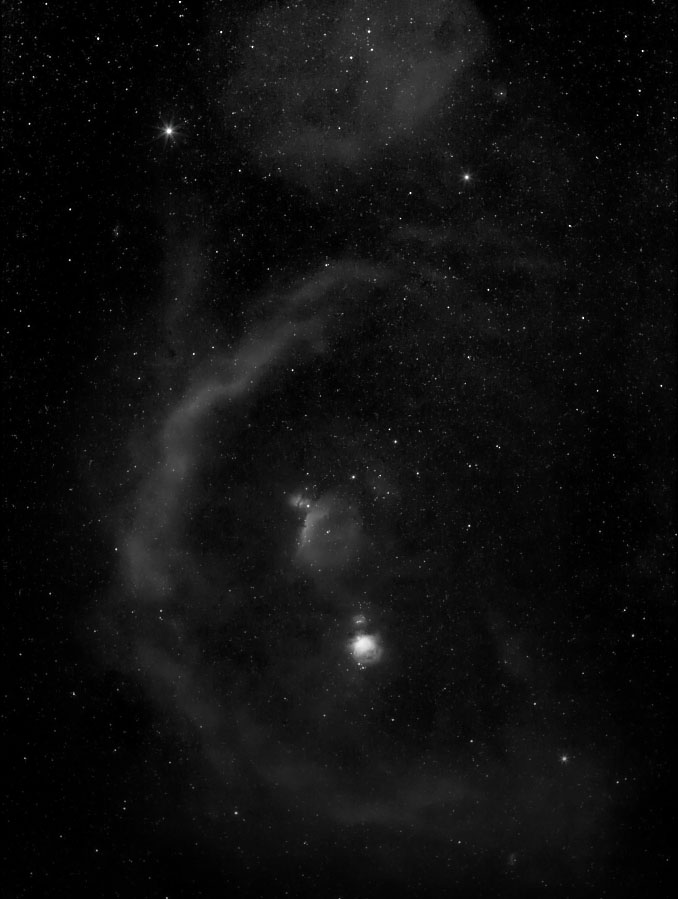
Orion and Barnard's Loop. Canon 300D (modded) with Baader H-alpha filter.
In the case of OIII, then both the blue and green pixels will record a signal but not at peak transmission. Still 3 out of 4 pixels will be recording so it is more efficient than H-alpha.
However, there is an alternative! That is to use a (visual) UHC type filter which passes both OIII (with H-beta) and H-alpha at the same time. Then the red pixels will record the H-alpha at the same time as the blue and green pixels are recording OIII. Modern DSLRs don't pass IR (even when modded) so visual UHC filters, which transmit in the IR, are not a problem. Using a UHC filter on a modded DSLR is a highly efficient way of maximising exposure time.
The Veil Nebula shot with an UHC filter (Canon 40D + Pentax 300mm lens)
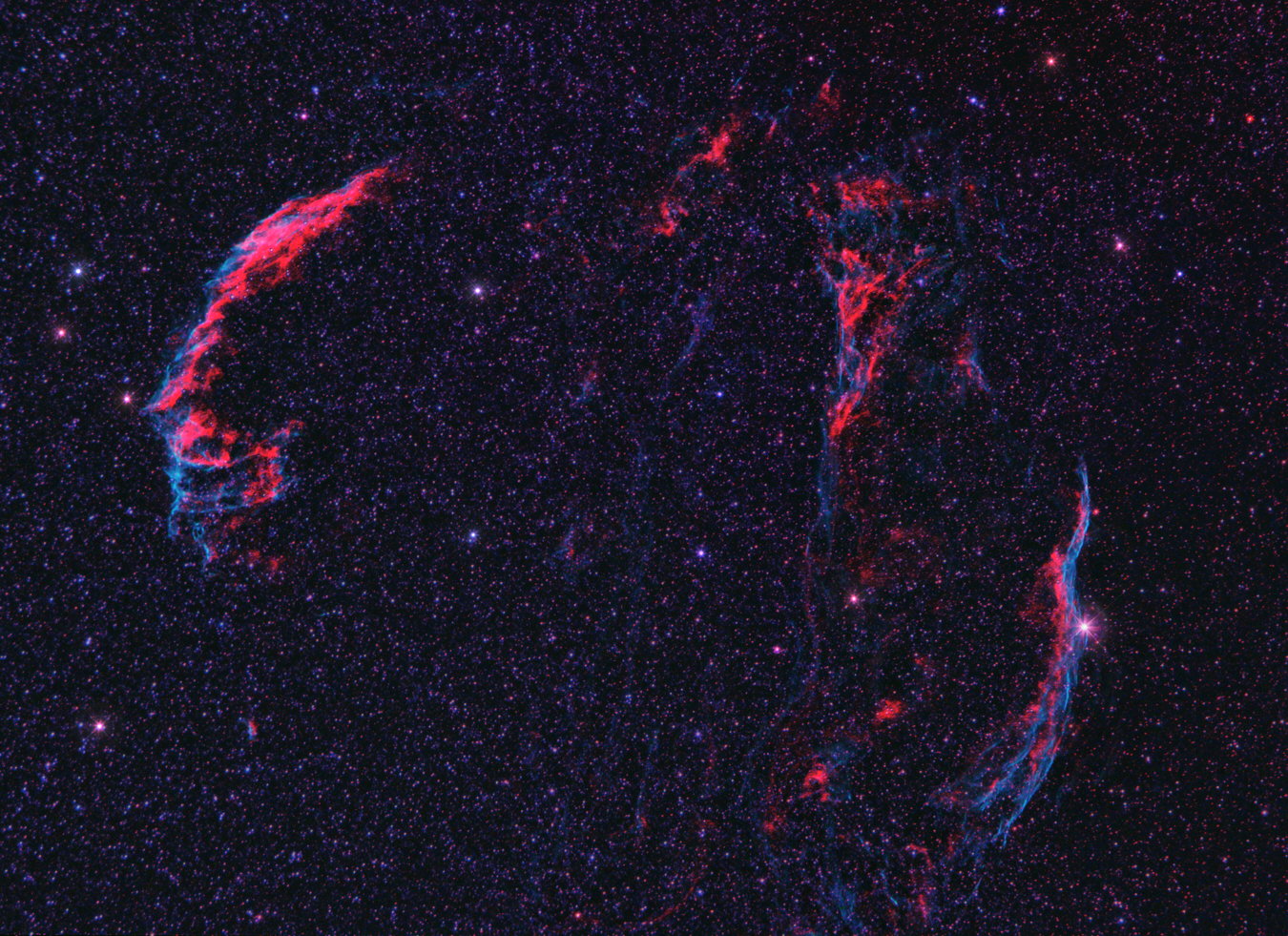
What ISO?
For the 14-bit Canon cameras, then an ISO of 400 seems to work best - this is my experience over many years. This is also the closest ISO setting to unity gain ie 1 photon = 1 ADU number so there is a logic to it. For the 12-bit cameras then increasing this to 800 would appear to be sensible. This value certainly works well on the 350D although I always preferred ISO400 on the 300D. Note these comments apply to RAWS - if shooting JPEGs then there is a benefit is using higher ISOs but there are so many other drawbacks with JPEGs that they should not be used for astro imaging.
What exposure? As I said I use ISO 400 as this preserves star colour yet is still fast enough for deep-sky objects. In my eperience the longer the exposure the better with perhaps 15 minutes being a noise limit for the Canon. I routinely use 10 minutes with my 40D which works well especially if temperatures are low.
Processing
The images here have have been processed using IRIS.
I have found this the best and quickest for dealing with these large
colour images. I tried shooting jpegs when they first came out but raws are the only way to go. IRIS handles the whole image processing operation including full
calibration using darks, flats, offsets and cosmetic defects. Make sure you tick the dark optimisation box when pre-processing - this overcomes the inevitable differences in temperature and that internal RAW "adjustment" that Canon carries out.
Conclusions
Many with astronomical CCD cameras dengrate DSLRs. Put it down to ignorance. I use both and both types excel in their own ways. Both deserve their place in our imaging tool-kit. I wouldn't want to manage without either.
Which is the best DSLR camera? If you want a camera that doubles for everyday use as well as
astrophotography then the Canon 60Da is probably the simplest although it is somewhat pricey. For emission nebula then
a modified camera (IR filter replaced) is best. I would personally recommend the Canon 300/350D/450D/40D modified by swapping/removing the filter .
Two firms in the UK now offer Canon conversion in the £100 to £250 range. The Pentax can be modified by Pentax Europe but is filter removal not filter swapping.
This camera then becomes sensitive to IR which may or may not be an advantage.
Finally, one thing to remember: bigger pixels equals better signal to noise ratio - all things being equal.
As pixels inevitably get smaller then cameras will not necessarily get better
because they have higher pixel numbers. For this same reason the Canon 5D (MkII or III) and the 6D, with the filter swapped, could well be the best currently available - they have big pixels as they have full frame sensors (36mm x 24mm).
So check those pixels sizes before you buy - this is one place where size matters!
Canon 40D, 450D: Despite pixels only 5.7 microns these cameras seem more a step forwards than backwards! They have 14 bit A-D converter giving raw files with a dynamic range of 16,000. They also have live view for easy focusing and this can be displayed live on an attached computer. It could be the best yet! The 50D had a reputation for fixed pattern noise and the 60D may be a better bet if you need resolution i.e. for short focal lengths.
Current recommended modded cameras: 40D, 450D, 1100D (all live view) - or at the budget end: 350D but no live view and the 300D is still worth a punt if under £100 already modified.
Sub-exposures and Signal-to-Noise
An article in Astronomy Now (Jan 2008 - Tech Talk) erroneously explains the benefits of stacking many digital SLR images together. The author has confused how signal to noise increases with increased exposure and states 100 1-minute exposures equates to one 10 minute exposure. Oh dear - there is a square root in there but not like that! Signal to noise actually increases in proportion to the square root of the exposure whether this is a single exposure or a stack of multiple exposures. The single exposure is better because it has a single read-out noise component whereas the 100 1-minute ones will have 100 read-out noise components. To minimse read noise then the longer the sub-exposure, without burning out bright details, the better. Note this miss-understanding has re-appeared in Sky & Telescope April 2015 - oh dear!
Future
Some manufacturers are now introducing back-surface-illuminated (BSI) chips. Professional CCD chips use this technology to boost quantum efficiencies up to 95%. The first to introduce a full frame BSI chip was Sony with their 7R II camera. However, Sony cameras appear to have a compromised raw - not a true raw so their use for us is probably less than ideal. Hopefully other manufacturers will respond.
|
